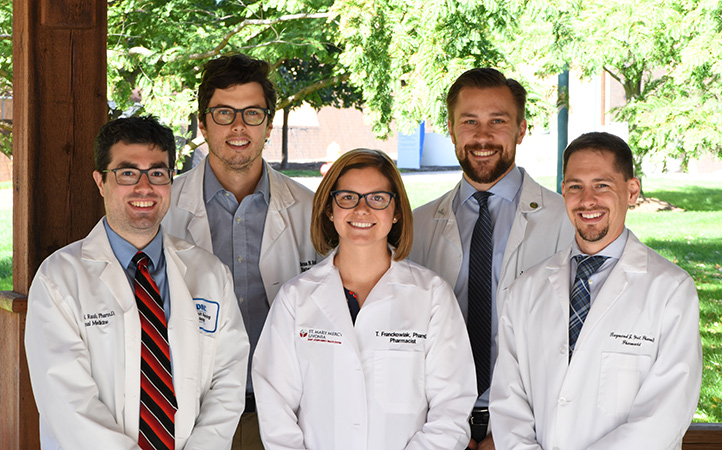Joshua N. Raub, Pharm.D., BCPS, Raymond Yost, Pharm.D., Sean M. McConachie, Pharm.D., BCPS, Taylor M. Franckowiak, Pharm.D., David Trupiano, Pharm.D., Kenneth Risko, R.Ph., M.B.A.
Studies demonstrate that pharmacist-led transitions of care (TOC) programs can reduce readmission rates. However, accurate identification of patients at highest risk for readmission is necessary to allocate resources towards patients who may benefit the most from pharmacy intervention. Current 30-day readmission prediction indices often demonstrate poor discriminatory capacity and are static and not validated over time. Additionally, current models have not been studied to determine whether accurate readmission discrimination translates into improved clinical outcomes. To address these issues, a 30-day readmission prediction index was derived and incorporated into our electronic medical record (EMR) followed by an iterative validation process to maintain long-term discrimination and accuracy. Finally, a multidisciplinary pilot program was established using the EMR-imbedded hospital readmission model to guide TOC processes on an internal medicine team.
The Hospital All-Cause Thirty Day Readmission Index (HATRIX) is a ten-variable risk index derived via reverse logistic regression from retrospective review of 40,668 patient admissions. The index demonstrated moderate discrimination in both the derivation (c-statistic = 0.73) and validation cohorts (c-statistic = 0.72) as assessed by the receiver operating characteristic curve. The ten variables include previous readmissions within 12 months, congestive heart failure, chronic kidney disease, pulmonary-heart disease, anemia, liver disease, essential hypertension, receipt of anxiolytics or antiarrhythmics, and length of stay. A continuous iterative validation process was developed in which a growing patient cohort (n=121,277 patients) was validated in three-month increments over a two-and-a-half-year period. Following ten iterative validations, the odds ratios for each of the ten variables shifted significantly (p<0.05), reflecting changes in the risk factors that conferred the greatest risk for readmission. Despite these changes, the diagnostic properties of the model, including discrimination, sensitivity, and specificity, were maintained throughout the study period.
Following incorporation of the model into our EMR, an internal medicine clinical pharmacist specialist integrated TOC activities into the daily workflow on one of two academic internal medicine teams. On one team, patients with high a HATRIX score were targeted for medication reconciliation and education. The other team served as a control. Following a 5-month trial period, 374 patients were included for assessment. Patients who received medication reconciliation from the pharmacist had a 48% reduction in 30-day readmission rates compared to patients who did not receive direct pharmacist interaction (11.4% vs. 21.7%; p=0.04). Additionally, pharmacist intervention was independently associated with reduced 30-day readmission rates on multivariate analysis (p=0.041).
The positive results of this longitudinal study demonstrate the clinical impact and feasibility of incorporating TOC interventions into the daily workflow of decentralized clinical pharmacists. Our EMR-imbedded HATRIX score can seamlessly guide inpatient medication reconciliation and the iterative validation process ensures our model will retain its discriminatory capability into the future. This innovative study demonstrates the impact of pharmacist-led research on both the healthcare system and patient levels.

